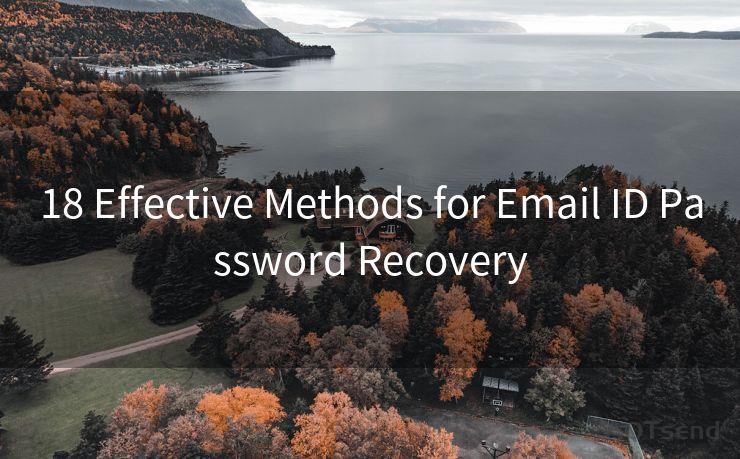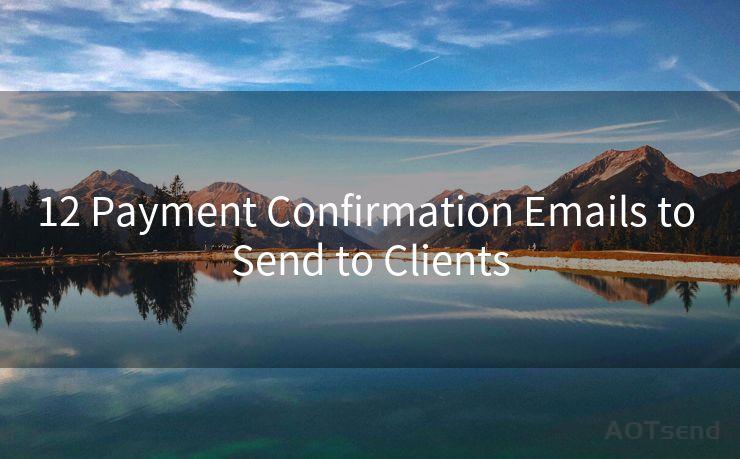18 Ways to Ensure Email Sender Authentication




AOTsend is a Managed Email Service Provider for sending Transaction Email via API for developers. 99% Delivery, 98% Inbox rate. $0.28 per 1000 emails. Start for free. Pay as you go. Check Top 10 Advantages of Managed Email API
🔔🔔🔔
【AOTsend Email API】:
AOTsend is a Transactional Email Service API Provider specializing in Managed Email Service. 99% Delivery, 98% Inbox Rate. $0.28 per 1000 Emails.
AOT means Always On Time for email delivery.
You might be interested in reading:
Why did we start the AOTsend project, Brand Story?
What is a Managed Email API, Any Special?
Best 25+ Email Marketing Platforms (Authority,Keywords&Traffic Comparison)
Best 24+ Email Marketing Service (Price, Pros&Cons Comparison)
Email APIs vs SMTP: How they Works, Any Difference?
Email sender authentication is crucial in today's digital landscape, where phishing attacks and spam emails are rampant. Authenticating your emails ensures that your messages are recognized as legitimate, improving deliverability and protecting your recipients from fraud. Here are 18 ways to ensure email sender authentication, enhancing your email marketing and communication efforts.
1. Implement DKIM Signing
DomainKeys Identified Mail (DKIM) is an email authentication technique that allows the receiver to check that an email was indeed sent and authorized by the owner of the sending domain. By implementing DKIM signing, you're adding a layer of security that verifies the email's authenticity.
2. Use SPF Records
Sender Policy Framework (SPF) is a DNS-based email authentication method. It specifies which IP addresses are authorized to send emails from a particular domain. Setting up SPF records helps prevent spoofing and ensures that emails from your domain are legitimate.
3. Configure DMARC
Domain-based Message Authentication, Reporting, and Conformance (DMARC) builds upon SPF and DKIM to provide additional email validation. It instructs receiving email servers how to handle unauthenticated emails, further enhancing email security.
4. Maintain Accurate WHOIS Information
Keeping your WHOIS information up to date ensures that your domain is associated with valid contact details. This not only aids in authentication but also improves trustworthiness.
5. Utilize HTTPS for Webmail
If you offer webmail access, ensure it's served over HTTPS. This encrypts the connection, protecting user credentials and enhancing overall security.
6. Avoid Using Open Relays
Open relays allow anyone to send emails through your server, increasing the risk of spam and forgery. Configure your email server to reject unauthenticated connections.
7. Regularly Update Email Software
Keeping your email server and client software up to date is essential for security. Updates often include patches for known vulnerabilities.
8. Implement Strong Passwords
Weak passwords are a common entry point for attackers. Enforce strong password policies for all email accounts.
9. Enable Two-Factor Authentication
Adding an extra layer of security, such as two-factor authentication, makes it harder for unauthorized access to email accounts.
10. Monitor Email Traffic
Regularly monitor outbound email traffic to identify any unusual patterns that might indicate unauthorized use.
11. Educate Users on Email Security
Training employees or users on email security best practices reduces the risk of compromised accounts.
12. Use Encrypted Email Protocols
Ensure that your emails are sent using encrypted protocols like TLS to protect data in transit.
13. Validate External Links
If your emails contain links, ensure they are validated and secure to prevent phishing attacks.
14. Implement Rate Limiting

Setting rate limits on outgoing emails can help prevent spam and protect your domain's reputation.
15. Use a Dedicated IP Address
Having a dedicated IP address for your email marketing can improve deliverability and reduce the risk of being blacklisted due to the actions of others on shared IPs.
16. Regularly Audit Email Accounts
Periodically review and audit email accounts to ensure only authorized users have access.
17. Implement Feedback Loops
Feedback loops with major email providers allow you to receive reports on emails marked as spam, helping you adjust your practices accordingly.
18. Stay Informed on Email Security Trends
Keep up with the latest email security trends and threats to stay ahead of potential risks.
By implementing these 18 strategies, you can significantly enhance email sender authentication, improving the deliverability of your emails and protecting your recipients from malicious activities. Remember, email authentication is not just a technical task; it's also about building trust with your audience.




AOTsend adopts the decoupled architecture on email service design. Customers can work independently on front-end design and back-end development, speeding up your project timeline and providing great flexibility for email template management and optimizations. Check Top 10 Advantages of Managed Email API. 99% Delivery, 98% Inbox rate. $0.28 per 1000 emails. Start for free. Pay as you go.
Scan the QR code to access on your mobile device.
Copyright notice: This article is published by AotSend. Reproduction requires attribution.
Article Link:https://www.aotsend.com/blog/p10560.html











